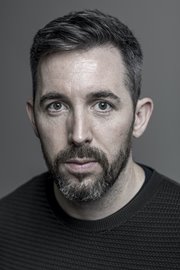General News - 1st prize
The Battle for Mosul
Original caption from World Press Photo (2018)
An unidentified young boy, who was carried out of the last ISIS-controlled area of the Old City by a man suspected of being a militant, is washed and cared for by Iraqi Special Forces soldiers. The soldiers suspected that the man had used the boy as a human shield in order to try to escape, as he did not know the child’s name.
Context
On 10 July 2017, after months of fighting, the Iraqi government declared the city of Mosul fully liberated from ISIS, although fierce fighting continued in pockets of the city. Mosul had fallen to ISIS three years earlier, and the battle to retake it had begun in October 2016.
In effect, the reconquering of Mosul comprised two parts: the battle for the eastern half of the city, and that for the west, across the Tigris River. East Mosul was recaptured by the end of January 2017, but the offensive on west Mosul, particularly the densely built-up Old City, proved more difficult. Large areas of the city were left in ruins, and huge numbers of civilians were caught in the crossfire as battle raged.
A United Nations report gives an absolute minimum of 4,194 civilian casualties during the conflict, with other sources putting the figure much higher. The Office of the UN High Commissioner for Human Rights pointed to extensive use of civilians as human shields, with ISIS fighters attempting to use the presence of civilian hostages to make certain areas immune from military operations.
After months of being trapped in the last remaining ISIS-held areas of the city, the people in west Mosul were severely short of food and water. Those who chose to remain in the city rather than go to one of the many camps for displaced people, initially relied on aid in order to survive.
As part of a review of our online archive, some images have limited access to protect the privacy of the individuals photographed. This image is only available on request for research purposes. Please request access by emailing our team. Read more about our work on our online archive.
More information
Through a Glass Darkly, by Robert Godden, published on Witness in September 2017
How should vulnerable children be represented in the media? Are we guilty of applying different ethical standards dependent on the race, ethnicity, nationality, location, gender or class of the child? Robert Godden explores these questions and provides guidelines for photojournalists and organizations.
What’s the Point of Conflict Photography?, by Lauren Welsh, published on Witness in January 2020
Why take and distribute images of conflict? Lauren Walsh addresses this question and interviews photographers who have covered conflicting issues.
Ivor Prickett
22 March, 2017
A woman in the Jidideh neighborhood of west Mosul screams out shortly after a mortar attack has killed her son.
On 10 July 2017, after months of fighting, the Iraqi government declared the city of Mosul fully liberated from ISIS, although fierce fighting continued in pockets of the city. Mosul had fallen to ISIS three years earlier, and the battle to retake it had begun in October 2016.
In effect, the reconquering of Mosul comprised two parts: the battle for the eastern half of the city, and that for the west, across the Tigris River. East Mosul was recaptured by the end of January 2017, but the offensive on west Mosul, particularly the densely built-up Old City, proved more difficult. Large areas of the city were left in ruins, and huge numbers of civilians were caught in the crossfire as battle raged.
A United Nations report gives an absolute minimum of 4,194 civilian casualties during the conflict, with other sources putting the figure much higher. The Office of the UN High Commissioner for Human Rights pointed to extensive use of civilians as human shields, with ISIS fighters attempting to use the presence of civilian hostages to make certain areas immune from military operations.
After months of being trapped in the last remaining ISIS-held areas of the city, the people in west Mosul were severely short of food and water. Those who chose to remain in the city rather than go to one of the many camps for displaced people, initially relied on aid in order to survive.

Ivor Prickett
Working exclusively for The New York Times, Ivor Prickett has spent months on the ground reporting in both words and pictures on the fight against ISIS in Iraq and Syria. ...
Through our education programs, the World Press Photo Foundation encourages diverse accounts of the world that present stories with different perspectives.
Our exhibitions showcase stories that make people stop, feel, think and act to a worldwide audience.
Our annual contest recognizes and rewards the best in photojournalism and documentary photography.
